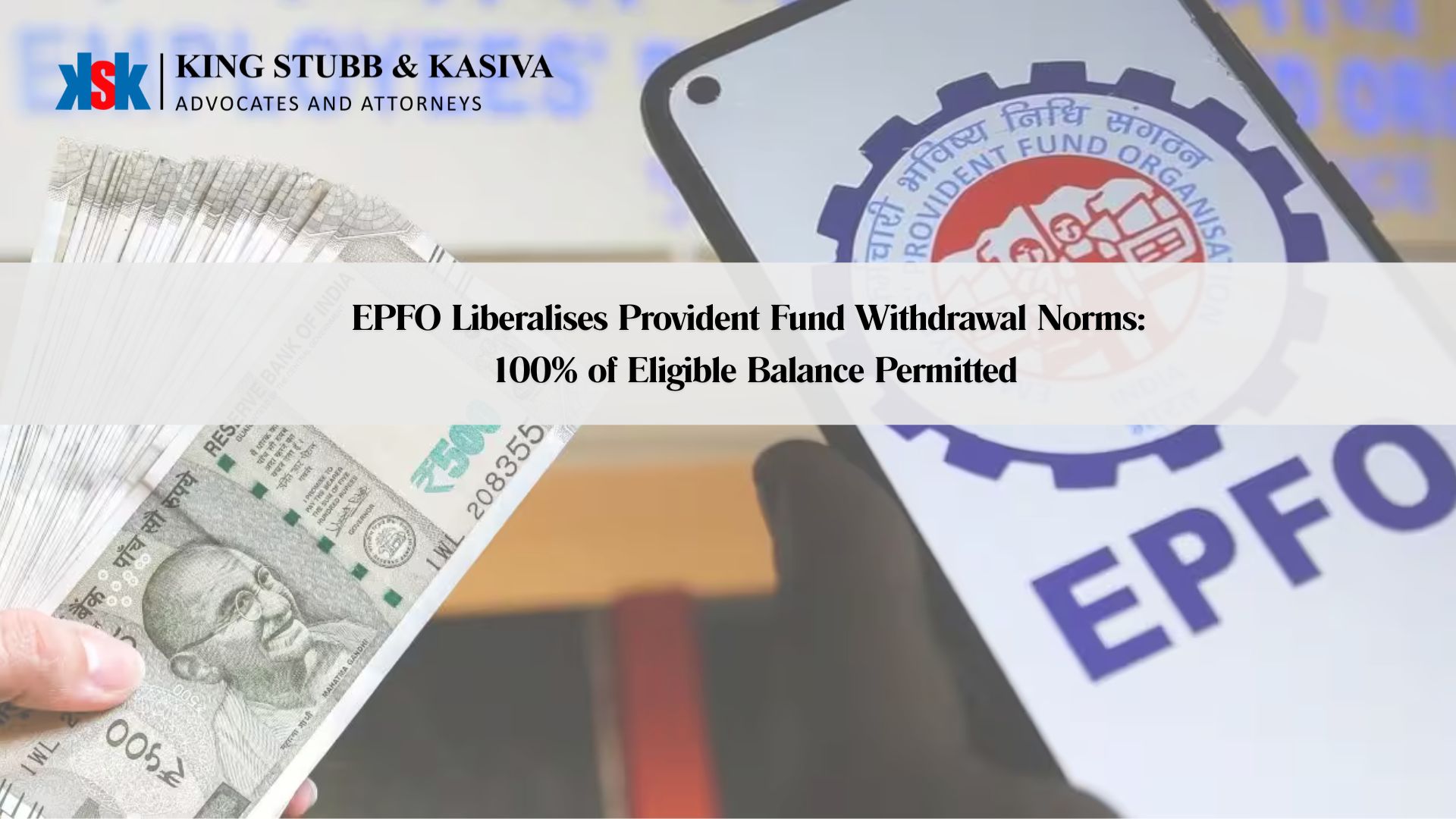EPFO Liberalises Provident Fund Withdrawal Norms: 100% of Eligible Balance Permitted

Source: Ministry of Labour & Employment | Employees’ Provident Fund Organisation (EPFO)
Background
At its 238th meeting held on 13 October 2025, the Central Board of Trustees (CBT) of the Employees’ Provident Fund Organisation (EPFO), chaired by the Union Labour Minister, approved major reforms to simplify partial withdrawals and improve ease of access for employees.
These changes form part of the Government’s continued push toward digitisation and flexibility in social security administration.
Key Highlights
100% Withdrawal Permitted: Members will be allowed to withdraw up to 100% of the “eligible balance” in their EPF account, encompassing both employee and employer contributions, subject to notified limits.
Simplified Categories:
The earlier 13 distinct withdrawal purposes have been consolidated into three broad categories:
- Essential Needs – for illness, education, or marriage.
- Housing Needs – for construction, purchase, or repayment of home loans.
- Special Circumstances – for unemployment, natural calamities, or other emergencies.
Uniform Eligibility:
A 12-month minimum service period will apply uniformly across all categories.
Higher Frequency Limits:
Withdrawals permitted up to 10 times for education and 5 times for marriage, up from the previous cap of three occasions in total.
Mandatory Minimum Balance:
Members must maintain a 25% minimum residual balance in their EPF account to preserve long-term retirement savings and interest accrual.
Vishwas Scheme:
A new “Vishwas Scheme” offers graded relief from penal damages on delayed remittances with penalties capped at ~1% per month, encouraging employers to regularise past defaults.
Digital Processing & Ease of Living:
EPFO aims to introduce “zero-document” and automated claim settlements through its upgraded UAN digital portal (EPFO 3.0).
Applicability Across Sectors
The reforms are not limited to government employees. They apply to all employers and employees covered under the Employees’ Provident Funds and Miscellaneous Provisions Act, 1952, including:
- Private-sector companies
- Multinational corporations (MNCs)
- IT and technology firms
- Manufacturing, services, and logistics entities
- Public-sector undertakings (PSUs)
- Other establishments registered with the EPFO
In effect, any employer legally required to contribute to the EPF must align with the updated withdrawal framework once notified.
Effective Date and Procedure
While the CBT approval marks policy clearance, it does not make the changes immediately effective. For these reforms to take effect, the following steps must occur:
- The Ministry of Labour & Employment must issue a formal notification amending the EPF Scheme, 1952 under Section 5(1) of the EPF Act.
- The amendment must be published in the Official Gazette of India.
- The EPFO will then issue operational circulars to regional offices and update the online claims portal.
Only upon Gazette publication will the new withdrawal limits and categories become legally enforceable.
Implications for Employers and HR Teams
Policy Alignment: Review internal HR manuals and payroll systems to integrate the 3-category withdrawal structure once the Gazette notification is issued.
Employee Education: Communicate the pros and cons of larger, more frequent withdrawals including the impact on retirement corpus and tax implications.
Compliance Audit: Undertake a self-audit of EPF remittances. Employers with any arrears or delays should consider regularisation under the Vishwas Scheme to avail reduced penal damages.
Digital Onboarding: Ensure employee KYC and UAN activation are current to benefit from automated claims.
Transition Readiness: Prepare internal FAQs and update employee communication materials in advance of the Gazette notification.
Frequently Asked Questions
Q1. Is this change effective immediately?
➡️ No. It is approved in principle and will come into force only after publication of the Official Gazette notification.
Q2. Does this apply to private-sector and MNC employers?
➡️ Yes. The changes cover all establishments registered under the EPF Act — private, public, MNC, IT, and service sectors alike.
Q3. Can employees now withdraw their entire balance?
➡️ They will be able to withdraw up to 100% of the “eligible balance” as per the new scheme once notified, while maintaining a 25% minimum corpus.
Q4. What is the Vishwas Scheme?
➡️ It’s a limited-period window to settle past PF defaults at reduced penal damages (1% per month), encouraging voluntary compliance.
KSK Comment
These reforms represent one of the most significant overhauls in provident fund administration in recent years. While they enhance flexibility and liquidity for employees, they also underscore the need for proactive employer communication, policy review, and long-term retirement planning support.
For employers and HR departments, this is an opportunity to strengthen compliance frameworks and employee education around savings discipline.
By entering the email address you agree to our Privacy Policy.